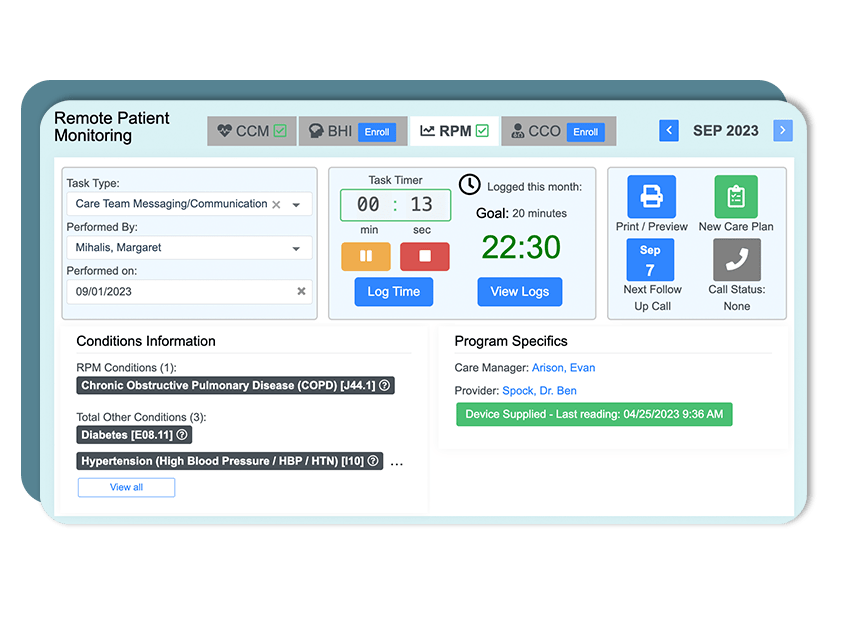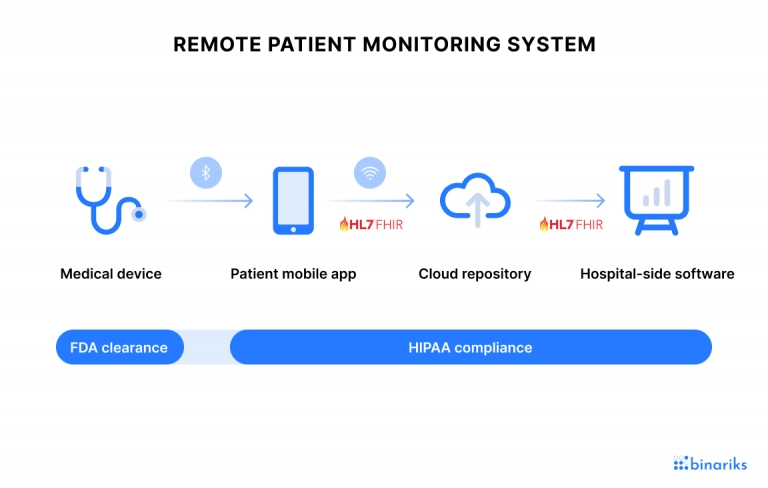The Future of Health Care: Remote Patient Keeping An Eye On Simplified
As health care proceeds to advance, one location that holds immense guarantee is remote person surveillance. With a focus on enhancing client results and enhancing medical care distribution, remote monitoring is poised to reinvent the sector.
Advantages of Remote Client Surveillance
Remote client tracking offers a wide variety of advantages for both doctor and clients alike. One significant benefit is the ability to constantly check clients' vital indications and wellness information from another location. This real-time monitoring allows doctor to detect any kind of concerning trends or modifications promptly, causing very early interventions and potentially avoiding medical emergencies. Additionally, remote client tracking enhances the overall top quality of care by supplying a much more extensive and all natural view of patients' wellness condition past standard in-person check outs.
Moreover, remote client monitoring can lead to enhanced individual end results and satisfaction. Remote monitoring can decrease the need for frequent medical facility visits, lowering healthcare expenses for both providers and clients.
Technology Driving Remote Monitoring
In the realm of contemporary health care, technological advancements play a pivotal role in driving the advancement and performance of remote person monitoring. The assimilation of cutting-edge modern technologies such as wearable tools, mobile applications, and cloud-based systems has actually reinvented the means health care service providers from another location handle and keep an eye on individual health - rpm software. These technologies enable continuous real-time surveillance of essential indications, medication adherence, and other critical wellness information, permitting prompt interventions and individualized care strategies
One trick innovation driving remote monitoring is the Net of Points (IoT), which enables seamless connection in between medical devices and healthcare systems. IoT gadgets such as smartwatches and cordless sensing units transfer and accumulate patient data to centralized platforms, promoting remote monitoring from anywhere in the world. Expert system (AI) and artificial intelligence algorithms additionally boost remote surveillance by analyzing large amounts of client information to identify patterns, predict health patterns, and alert doctor to prospective problems.
Effect On Medical Care Distribution
With the integration of advanced technologies driving remote individual surveillance, the effect on health care distribution is coming to be progressively profound and transformative. Remote patient surveillance permits medical care carriers to supply even more positive and individualized care to patients, bring about boosted health and wellness results and reduced hospital admissions. By from another location tracking crucial indications, symptoms, and medicine adherence, health care professionals can intervene early, protecting against difficulties and boosting the general quality of treatment.
Additionally, remote surveillance improves access to health care services, especially for individuals in underserved or country locations. Patients can receive continuous surveillance and assistance from their homes, getting rid of the need for frequent in-person check outs. This not only saves time and reduces prices for both patients and medical care centers but additionally reduces the threat of exposure to transmittable illness, an important consideration in the existing healthcare landscape.
In addition, remote client surveillance enables doctor to far better prioritize and designate sources treatment based upon real-time data. By determining risky clients and interfering quickly, medical care distribution ends up being extra effective and reliable, inevitably resulting in an extra sustainable and patient-centered medical care system.
Improving Person Outcomes

Moreover, RPM permits proactive management of chronic problems, lowering the chance of intense worsenings and health center readmissions. People profit from raised comfort and convenience, as they can obtain treatment in their own from this source homes while staying connected to their doctor. This continual surveillance not just enhances patient satisfaction yet likewise promotes a sense of empowerment and involvement in their very own health and wellness management.
Future Trends in Remote Surveillance
Accepting advanced technologies in remote patient surveillance is shaping the future landscape of healthcare distribution. The future patterns in remote monitoring are anticipated to transform the way medical care is offered, making it more patient-centric and effective. One significant fad content is the enhanced use of wearable tools and sensors to accumulate real-time data, making it possible for doctor to check clients continuously without the demand for regular in-person check outs. These devices can track vital indications, medication adherence, and task levels, providing a detailed view of the person's health and wellness status.

Additionally, telehealth systems are becoming a lot more sophisticated, enabling for virtual examinations, remote diagnosis, and remote individual keeping track of done in one incorporated system (remote patient monitoring platform). This alternative technique to remote surveillance is improving medical care shipment, improving patient contentment, and ultimately, boosting total quality of care
Final Thought
Finally, remote patient monitoring provides many benefits in medical care distribution, driven by advancements in innovation. It has the prospective to enhance person end results and change the means healthcare is delivered. Future trends in remote tracking will continue to shape the landscape of health care, supplying possibilities for even more efficient and customized individual treatment.
Remote patient tracking offers a wide variety of advantages for both health care companies and individuals alike. Furthermore, remote individual tracking improves the general quality of care by providing an extra extensive and alternative sight of clients' health standing beyond traditional in-person visits.
In addition, remote individual monitoring can lead to better individual outcomes and contentment. Remote client monitoring enables healthcare carriers to provide even more individualized and proactive treatment to patients, leading to enhanced health results and reduced healthcare facility admissions. Remote client surveillance (RPM) plays a significant duty in improving individual end results by offering continual, real-time data that allows medical care companies to interfere promptly and change therapy plans as needed.